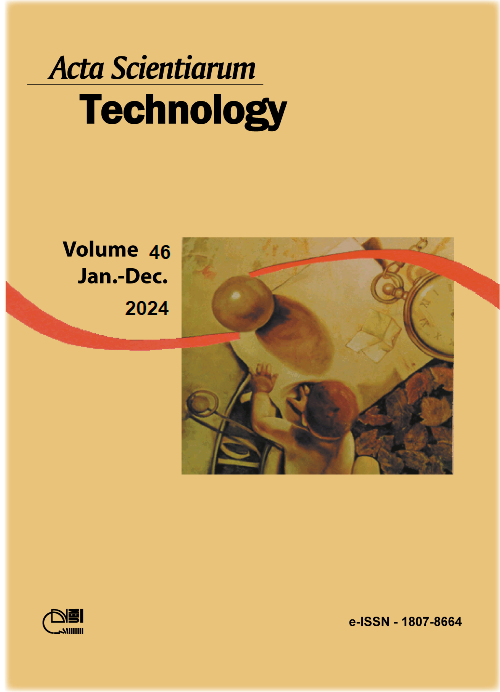An integrated exploration of heat kernel invariant feature and manifolding technique for 3D object recognition system
DOI:
https://doi.org/10.4025/actascitechnol.v46i1.62608Palavras-chave:
Graph clustering; laplacian matrix; delaunay triangulation; graph heat kernel; manifolding techniques; structural pattern recognition.Resumo
Spectral Graph theory has been utilized frequently in the field of Computer Vision and Pattern Recognition to address challenges in the field of Image Segmentation and Image Classification. In the proposed method, for classification techniques, the associated graph's Eigen values and Eigen vectors of the adjacency matrix or Laplacian matrix created from the images are employed. The Laplacian spectrum and a graph's heat kernel are inextricably linked. Exponentiating the Laplacian eigensystem over time yields the heat kernel, which is the solution to the heat equations. In the proposed technique K-Nearest neighborhood and Delaunay triangulation techniques are used to generate a graph from the 3D model. The graph is then represented into Normalized Laplacian (NL) and Laplacian matrix (L). From each Normalized Laplacian and Laplacian matrix, the feature vectors like Heat Content Invariant and Laplacian Eigen values are extracted. Then, using all of the available clustering algorithms on datasets, the optimum feature vector for clustering is determined. For clustering various manifolding techniques are employed. In the suggested method, the graph heat kernel is constructed using industry-standard objects which are taken from the Engineering bench mark Data set.
Downloads
Downloads
Publicado
Como Citar
Edição
Seção
Licença
DECLARAÇíO DE ORIGINALIDADE E DIREITOS AUTORAIS
Declaro que o presente artigo é original, não tendo sido submetido í publicação em qualquer outro periódico nacional ou internacional, quer seja em parte ou em sua totalidade.
Os direitos autorais pertencem exclusivamente aos autores. Os direitos de licenciamento utilizados pelo periódico é a licença Creative Commons Attribution 4.0 (CC BY 4.0): são permitidos o compartilhamento (cópia e distribuição do material em qualqer meio ou formato) e adaptação (remix, transformação e criação de material a partir do conteúdo assim licenciado para quaisquer fins, inclusive comerciais.
Recomenda-se a leitura desse link para maiores informações sobre o tema: fornecimento de créditos e referências de forma correta, entre outros detalhes cruciais para uso adequado do material licenciado.















